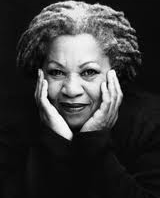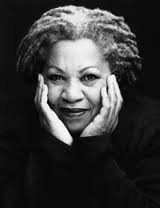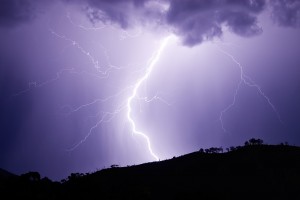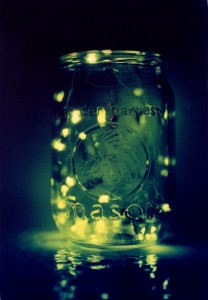by Arlette Hernandez
I had always heard tales about the Promised Land called “college.” Growing up with Cuban immigrant parents, college was little more than a goal I needed to meet so I could earn a degree and break the cycle of poverty. It was not until I got into high school when that changed. All my teachers would sit back in their cushioned office chairs, staring off into the distance, eyes glazing over as they talked about college. About pulling all-nighters and roaming through city streets at two in the morning. Or for some, about meeting their husbands and wives, their partners for the past however many million years. College became a place for adventure, not just a place to get a degree. Despite all these different views, everyone always seemed to arrive at the same order: study abroad if you can.
Now flash-forward to five months ago when I found myself walking around Heathrow International Airport, eyes shifting between my phone screen and the semi-friendly faces scurrying past me as I waited to connect to the Wi-Fi. I had waited for twenty minutes, but my neon purple suitcase never made an appearance on the carousel. After filing a report with British Airways, I was tasked with the mission of transporting myself and my backpack—filled with nothing but a MacBook and a copy of Mark Danielewski’s House of Leaves—to Bath, a town in the southwest of England, located about an hour and a half (by train) from London. My next three months in the country would be filled with weekend trips, classes on Shakespeare and Chaucer, and an internship at a local bookshop.
My first day on the job was overwhelming. The bookshop may have been small, but every inch was stuffed. Walking through, you would see books scattered shelves and tables, even a cement filled bathtub with books littered on its surface. Yet, the biggest shock came to me when I walked past a shelf curated with some of the staff’s favorite books. As my eyes trailed over the covers, I noticed a familiar title. It was the same book I had brought with me from house—House of Leaves—but the design on the cover was wildly different.
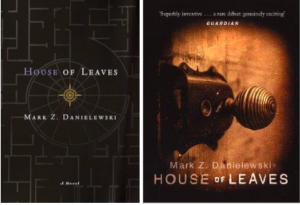
England is close enough to the US, that the culture shock doesn’t grab you immediately. Instead, it builds up slowly like the suspense in a good thriller novel. I expected the culture shock; I expect all the differences. But for some reason, it never occurred to me that I’d spot those differences in something as simple as a book cover.
As a part of the internship, I had to write a 30-page research paper inspired by my experiences. I followed this theme of book cover designs, mixing it with my own interest in divisions between genre and “literary” fiction. Really, I wanted to demonstrate that books are not neutral objects. Rather, book covers are incredibly meaningful. They are surfaces constructed by marketing strategies, aimed or targeted at certain groups. Nevertheless, I find the differences between covers in the US and UK fascinating.
Here’s another example:
The Long Way to a Small, Angry Planet by Becky Chambers
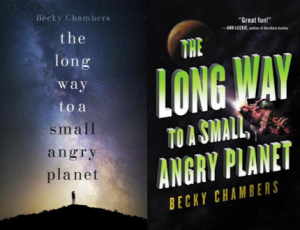
The difference is pretty striking, right? When I look at the UK cover, I think “sophistication.” It looks like something that would be read by my forty-year-old neighbor who works at a private school twenty minutes away. It’s radically different from the US cover.
The UK cover shows the silhouette of a girl standing atop a grassy hill, in front of a nighttime sky. It looks like we start on the ground, on earth, but presumably end up somewhere in a faraway galaxy. The image of the sky takes of the majority of the cover’s space, and the girl’s body covers perhaps a sixth of the area. She seems to be lost in the stars. While the space theme on the UK cover is realistic, the US cover appears cartoonish in comparison. The US cover features a black background with bold and blocky green letters coated in a gradient theme. Surrounding the letters is an image of a moon and a spaceship. I immediately stereotyped this novel as sci-fi. The spaceship, the lettering, they all scream Star Wars and Star Trek. We look at the cover and think adventure and plot, not “what is the meaning of life?”
You can look at these differences in a few different ways. In terms of age, I get the sense that the UK cover is trying to appeal to an older audience. Because of the contrast between the girl’s body and the stars, the cover suggests that the novel is concerned with man’s search for meaning, something that would likely be of more concern to an older audience. Yet, the US cover, knee-deep in genre tropes, would probably appeal toward a younger audience that cares more about story than commentary. The issue of genre v. literary fiction also plays a role. Traditionally, sci-fi is seen as lowbrow literature, or genre fiction, so a cover that makes direct appeals toward that genre is also targeting its readership. Meanwhile, the UK cover, which evokes some heavy existential questions, targets a more literary crowd.
Sometimes the differences between covers speak more to the author or the novel’s reputation.
Beloved by Toni Morrison
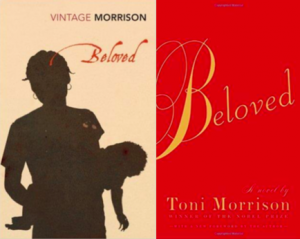
When I look at the US cover, it’s like it’s saying, “Yes, this is THE Beloved by THE Toni Morrison. Enough said.” Meanwhile, the UK cover gives a little bit more about the novel’s plot. This is understandable considering the fact that Beloved is a uniquely (African) American novel that is taught in a number of US classrooms. It is undoubtedly a part of the American canon, so a publisher working in 2007—thirty years after the novel was first published—does not have to work quite as hard to sell it.
The differences in cover design make sense. When you change the audience, you also have to change the strategies you use to market a book toward them. Still, I wonder if we can draw any cultural conclusions based on these differences. Does the US prefer more concrete imagery and the UK something more abstract? In the case of Chambers’ novel, does the cover more clearly evoke the sci-fi genre because science fiction novels are more popular in the US than in the UK? I have no idea, but it’s questions like these that keep me up at night.

